

SOUTHEAST
March 2009

1 of 1


SOUTHEAST
March 2009


1 of 1
It’s an early spring morning, and my field season begins with a burn.
I’m back again to help hunt Rattlesnakes for a mark/recapture study in South Carolina. My third year in a row,
and these woods are beginning to feel familiar, starting with the smell of charred timber and the crunch of blackened
pine needles beneath our boots.
The usual crew is here, and we fan out in search of stumps exposed by the controlled burn. Although some logs
are still smoldering, it’s been a few days since the fire, time enough for snakes to return to the surface and bask near
their hibernacula. Sure enough, in just a few minutes Mike spots this tiny neonate Copperhead, perfectly posed right
out in the open.
We walk the burn for an hour, but find nothing else, so it’s time to check tin. We uncover a placid Racer and a
nasty Corn Snake (go figure). Mark takes particular delight as the spring-loaded snake jumps up and nails me
repeatedly while I’m trying to take close-ups.
Later in the day, by the edge of a field filled with broom straw, Mark lifts an isolated piece of tin. He jumps back
in revulsion
―
“My God, that’s disgusting,”
―
and quickly lowers the sheet metal to cover the awful sight. “Take a
look.” So I raise the tin, and there is the most beautiful Corn Snake I’ve ever seen in the wild.
Another flip reveals what has become an all too common sight in the South, an angry mound of fire ants taking
over the tin that God gave to reptiles. (I think that’s what it says in the Bible.) But then a closer look at the far end
finds a very cautious Canebrake doing its best to peacefully coexist.
Another Canebrake, this time a juvie, is found sunbathing on the pine straw.
It’s good to find Canebrakes, but our real target is a Diamondback. Several days of searching produces only one
recapture, and we’re beginning to suspect the EDBs are already away from the stumps, hiding now under vegetation.
Our suspicions are confirmed when we track one of the radio-tagged specimens to its location in thick wire grass.
For the most part, that was it for the study site, this time around. Not too many snakes, but at the end of the day,
my appreciation for the quiet beauty of this place continues to grow with each return visit.
After SC I go down for a day to visit a friend in Georgia. The weather is too cool and rainy for anything but
amphibians, but that’s fine by us, a good excuse to get out into the mud, specifically, to look for Mud Salamanders.
These secretive salamanders bury themselves along seeps and sluggish creeks. The only real way to find them is
to dredge the mud, down on your knees, sifting through the muck.
By the edge of a pond we find other amphibians under logs
―
lots of little salamanders and a few frogs.
One log holds a surprise, a frog buried deep inside the rotting wood, instead of hiding underneath.
End the day in another wetland habitat, a swamp created by a shallow, slow-moving river that spreads out
through the forest. We find many Marbled Salamanders, and even an unexpected snake, the last herp of the trip.
Brown Snake
Storeria dekay
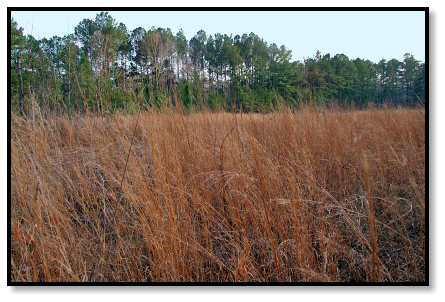
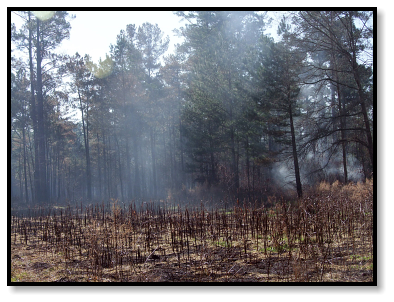
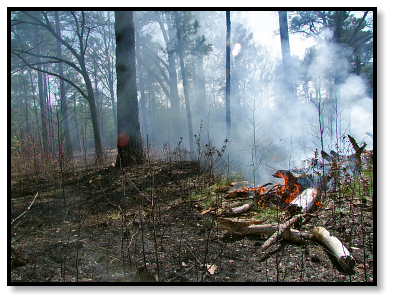
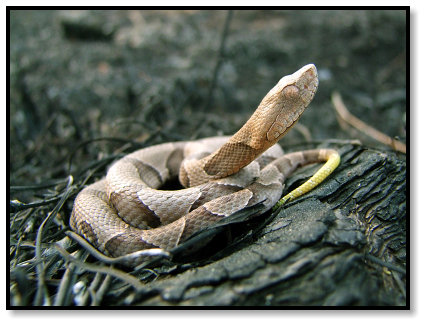

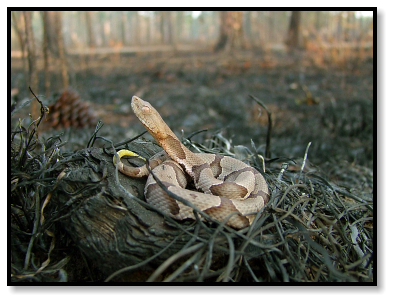

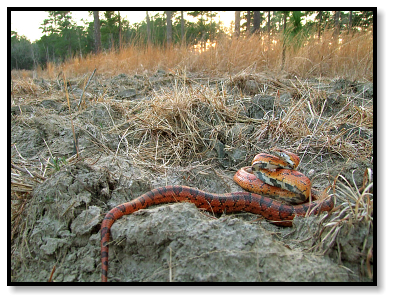
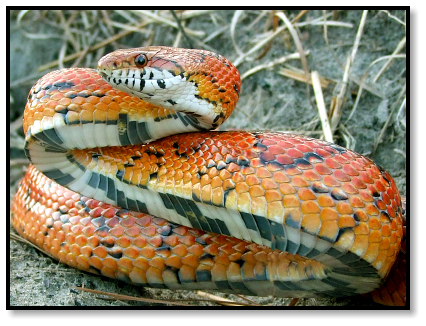

Southern Copperhead
Agkistrodon contortrix contortrix
Corn Snake
Elaphe guttata
Southern Black Racer
Coluber constrictor priapus
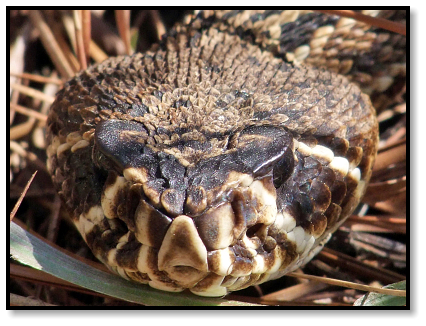

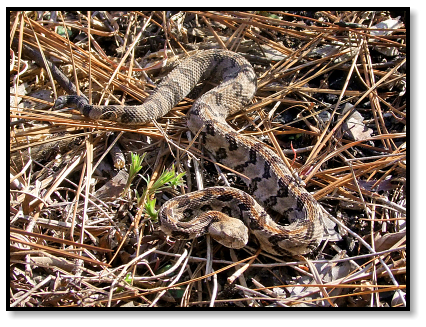
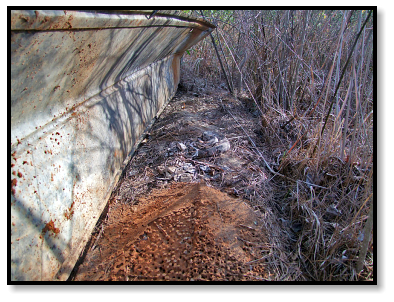
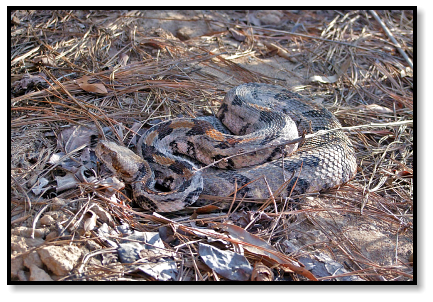
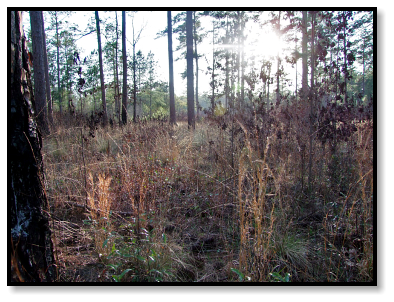

Timber (Canebrake) Rattlesnake
Crotalus horridus
Eastern Diamondback Rattlesnake
Crotalus adamanteus
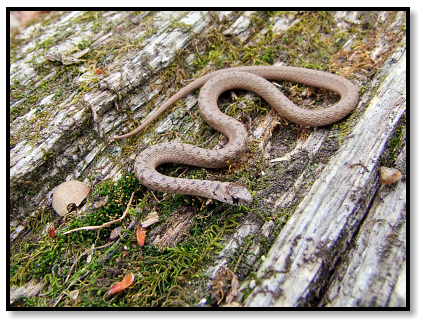

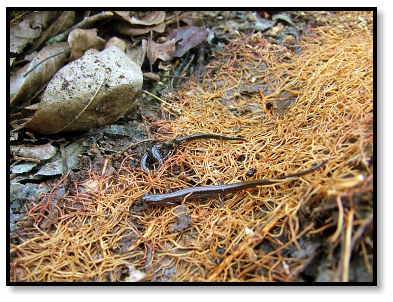
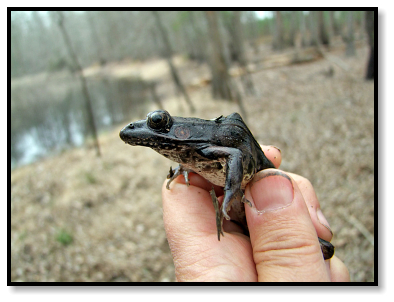
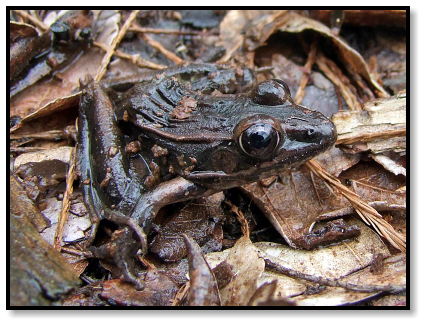
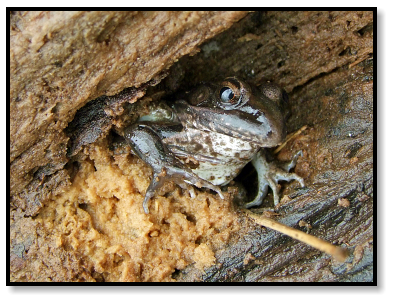
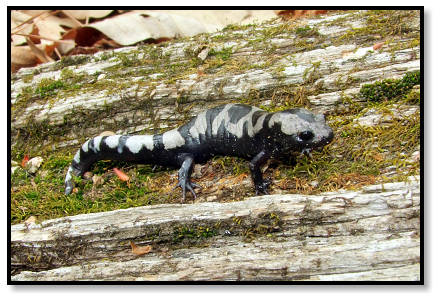
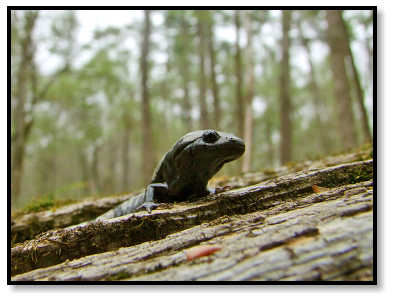

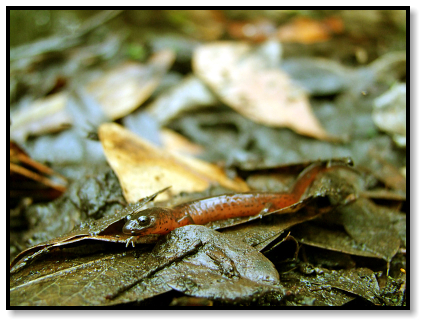
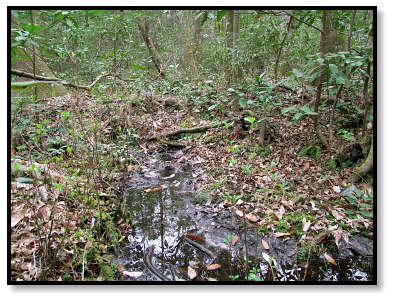
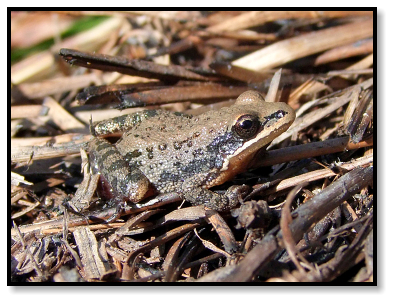
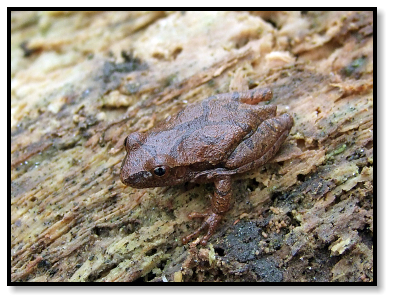
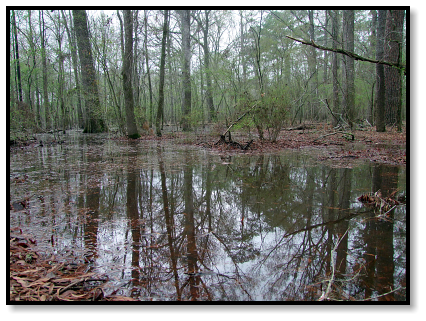
Mud Salamander
Pseudotriton montanus
Dwarf Salamander
Eurycea quadradigitata
Southern Chorus Frog
Pseudacris nirgita
Spring Peeper
Pseudacris crucifer
Southern Leopard Frog
Rana sphenocephala
Marbled Salamander
Ambystoma opacum







